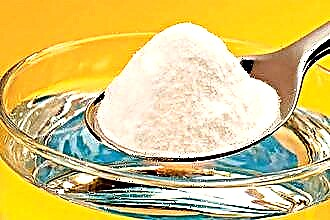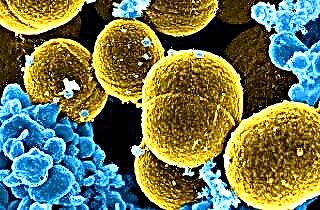Few people know that in addition to nasal drops, there are other methods of dealing with a cold. They are more gentle and can be used for months. One of the methods of therapy for rhinitis is the procedure for flushing the nasal passages. But how to rinse your nose? For this purpose, solutions based on synthetic or natural components can be used. Of course, the effect of the procedure is much weaker than that of vasoconstrictor drugs, but the number of adverse reactions in the latter is much greater.
A homemade nasal rinse solution can be prepared based on vegetable juice, salt, or medicinal herbs. You can also purchase ready-made medicines, for example, Aqua Maris, Dioxidin, Miramistin.
It is necessary to deal with the noses of children when the first symptoms of a cold appear. This will prevent the progression of the disease and accelerate recovery.
Procedure technique
To obtain the maximum therapeutic effect, you must follow the rules. They relate to the technique of performing the flushing procedure. To rinse your nose at home, you need:
 prepare a special device for rinsing (buy at the pharmacy) or take any container with a spout. A syringe is also suitable;
prepare a special device for rinsing (buy at the pharmacy) or take any container with a spout. A syringe is also suitable;- prepare a solution, pour it into a container;
- stand near a bathtub or washbasin (rinsing is best in the bathroom, as splashes may appear);
- lean forward a little, turn your head to the right. We prepared for the lavage of the right nasal passage;
- insert the nozzle of the container into the nostril and slowly pour in the liquid. During the procedure, you should hold your breath, which will prevent the solution from getting into the deep parts of the respiratory tract. Usually one nasal cavity is flushed for about 5-10 seconds;
- open your mouth. Rinse water can flow out of the other nasal passage, and also partially enter the oral cavity, which is the norm;
- blow your nose well after all the liquid has run out;
- turn your head;
- repeat the procedure with another nasal passage;
- blow your nose again.
It is not recommended to flush the nasal passages by actively drawing in the solution through the nostrils or injecting fluid under high pressure.
The nose is washed even for babies, taking into account some peculiarities. It is advisable to repeat the procedure before instilling the nose with medications, for example, hormonal or antihistamines. This will enhance their action and accelerate the absorption of the active substance into the tissue.
Saline solution
What is the best way to rinse your nose with a runny nose? Saline solution has proven its effectiveness for centuries. The action of the drug is:
- reducing tissue swelling;
- restoration of drainage function, so that mucus does not accumulate in the paranasal cavities;
- a decrease in the concentration of toxins in mucus;
- removal of microbes, allergens from the nasal passages;
- a decrease in the viscosity of mucous secretions;
- strengthening local immunity;
- relief of nasal breathing.
Indications
When can I rinse my nose? Saline solution helps to cope with:
- rhinorrhea due to a cold;
- allergic rhinitis, when rhinitis develops after contact with an allergen;
- viral rhinitis. Washing can prevent secondary infection with bacteria and cleanse the nasal passages of pathogens;
- chronic infectious rhinitis. The procedure is necessary to normalize the work of the ciliated epithelium, ensure the outflow of mucus and fight inflammation;
- vasomotor rhinitis;
- sinusitis. It is recommended to rinse the nasal passages with a solution to reduce swelling of the mucous membrane, restore drainage, and sanitize cavities.

In addition, the use of saline solution is considered a good prevention of exacerbation of chronic rhinitis. It is also prescribed to prevent the appearance of snot against the background of irritation of the mucous membrane by microbes, dust, and chemicals. In children, the procedure can reduce the frequency of exacerbations of adenoiditis.
Preparation of the solution
How and with what to rinse your nose at home? It is necessary to start flushing the nasal passages when frequent sneezing occurs, which indicates irritation of the mucous membrane. The next stage of rhinitis is an increase in the amount of mucus produced. The protective reaction of the body in the form of hypersecretion makes it possible to flush the irritant from the nose.
To prepare the solution, it is enough to have salt and warm water. There are several types of saline solution. They differ in the concentration of the active agent.
The hypertonic solution with a high salt content has a powerful anti-edema effect and reduces rhinorrhea (nasal discharge). The course of its use should not exceed 3-5 days.
For preparation, it is necessary to dissolve 3 g of salt (food, sea) in 330 ml water. If nasal congestion increases during the rinsing process, it is necessary to wash off the saline solution with the mucous membrane of boiled water. Next time it is recommended to prepare the medicine with less salt.
To increase the therapeutic effect, you can add a couple of drops of iodine to the prepared solution.
Features of therapy
Frequent use of the saline solution is also not recommended. It is enough to rinse the nasal passages daily no more than 5 times (during an exacerbation) or once (for prophylaxis).
If you often use solutions for washing, the composition of the microflora of the nasopharynx is disrupted, which is fraught with the development of fungal rhinitis, local immunosuppression.
With a purulent process, washings should be performed carefully, since there is a high risk of purulent contamination of the surrounding tissues. Due to improper procedure, infection of the auditory tube and paranasal sinuses is possible.
Herbal infusions
How to rinse your nose with a runny nose other than saline? Medicinal herbs are very popular. Due to their natural origin, people are not afraid to use them in the treatment of many diseases not only of the ENT organs, but of the urogynecological, digestive systems.
Most often, chamomile decoction is used for the procedure. Essential oils, flavonoids have a beneficial effect on the nasopharyngeal mucosa. Thus, the severity of inflammation and tissue edema are reduced.
 Chamomile also protects the mucous membrane from the irritating effects of environmental factors.
Chamomile also protects the mucous membrane from the irritating effects of environmental factors.
How can you rinse the nasal passages? Here are some recipes:
- in the pharmacy you can buy chamomile, crushed and packaged in sachets. Pour boiling water over one such bag, close the lid and wait 15 minutes. The infusion should cool slightly to avoid scalding the mucous membrane. The frequency of the procedure is 4 times a day;
- chamomile, sage can be taken in equal volumes (15 g each), mixed, pour 460 ml of boiling water, wait 20 minutes. Then you need to filter the infusion and use it for the procedure.
Remedies for rinsing the nasal passages can be prepared from sage, eucalyptus, oak bark, coltsfoot, or calendula.
Other folk recipes
How can you reduce nasal congestion, and how to get rid of a runny nose? Such solutions are considered no less effective:
- aloe has powerful bactericidal, anti-inflammatory properties. Its juice can be used to instill or rinse nasal cavities. To prepare the medicine, it is enough to add 15 drops of juice to warm water with a volume of 100 ml;
- to prepare the next medicine, you need to peel the beets, chop them, squeeze the juice. The recipe requires a dark colored, oblong vegetable without light rings. The juice (15 ml) must be dissolved in warm water (170 ml).Note that beetroot juice does not have a vasoconstrictor property, so you should not expect the cessation of rhinorrhea. On the other hand, it makes it possible to improve nutrition and delivery of immune components to the inflammatory focus;
- propolis is a good anti-inflammatory, regenerating agent. We emphasize that in case of an infectious rhinitis, its use is not recommended due to the high risk of disease progression.
Drug therapy
 In the treatment of rhinitis, ready-made preparations for rinsing the nose can be used. They act much faster, but they have more contraindications and side effects. When using them, it is necessary to strictly observe the dose and frequency of rinsing.
In the treatment of rhinitis, ready-made preparations for rinsing the nose can be used. They act much faster, but they have more contraindications and side effects. When using them, it is necessary to strictly observe the dose and frequency of rinsing.
Furacilin is an effective medicine. Its antiseptic, anti-inflammatory properties are widely used in medical practice. Thanks to the broad antimicrobial action, it is possible to quickly sanitize the infectious focus, thereby eliminating the cause of the inflammatory process.
Furacilin is available in tablet form, has a yellowish tint. To prepare a means for rinsing the nose, crush the tablet to a powdery state, pour 100 ml of warm water.
If inflammation spreads to the posterior pharyngeal wall, you can use furacilin to gargle.
It is recommended to repeat the procedure up to three times a day, alternating with saline. Among the adverse reactions, it is worth highlighting the irritation of the nasopharyngeal mucosa, which requires a temporary discontinuation of the drug. In rare cases, an allergic reaction may develop, which is manifested by itching sensations, redness of the skin, rashes and tissue edema.
Miramistin
Miramistin has a broad antimicrobial effect, which makes it possible to use the solution for fungal, viral and bacterial infections. The drug has a minimal number of adverse reactions. It is approved for use in childhood and pregnancy.
Antimicrobial solution is widely prescribed for sinusitis, as well as chronic rhinitis. Its use in the recommended dose makes it possible to prevent the appearance of purulent discharge in the inflammatory focus.
Miramistin can be administered in concentrated form or diluted with saline (for a child). The drug has only one contraindication - the individual tolerance of the components of the solution.
Aqua Maris
The drug based on sea water is absolutely safe, it is prescribed at any age, starting from the first days of life. A drug in the form of drops is recommended for babies, a spray is prescribed for older children.
Analogs of the drug may differ in salt concentration, release form and bottle volume. Aqualor, Dolphin, Marimer, Humer are widely used.
The solution can be administered prophylactically to prevent exacerbation of chronic rhinitis. In addition, the solution can rinse the nasal cavities for hygienic purposes, for example, after staying in a dusty room.
With Aqua Maris, you can easily clean the nasal passages from dry crusts. To do this, you need to drip the solution into the nose and wait 5 minutes. During this time, the crusts become soaked, after which they can be removed without injuring the mucous membrane.
To enhance the effect of the washing procedure, it is recommended to use drops for nasal administration on a plant (Pinosol) or drug-based (Nazivin, Allergodil, Nasonex).

 prepare a special device for rinsing (buy at the pharmacy) or take any container with a spout. A syringe is also suitable;
prepare a special device for rinsing (buy at the pharmacy) or take any container with a spout. A syringe is also suitable;

